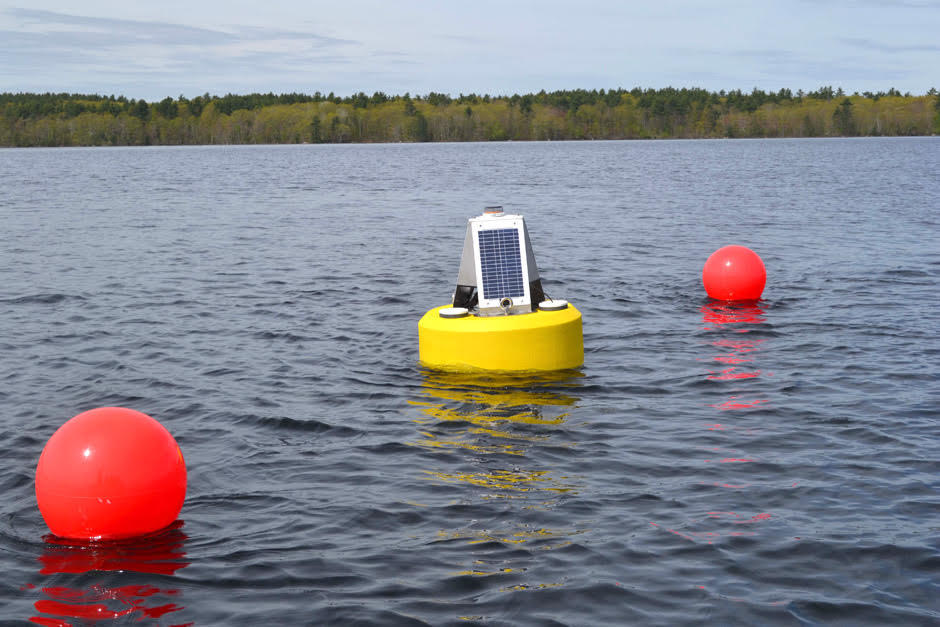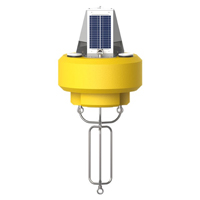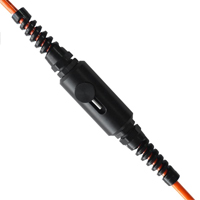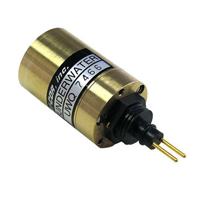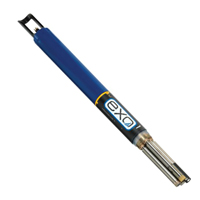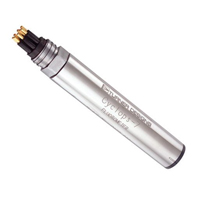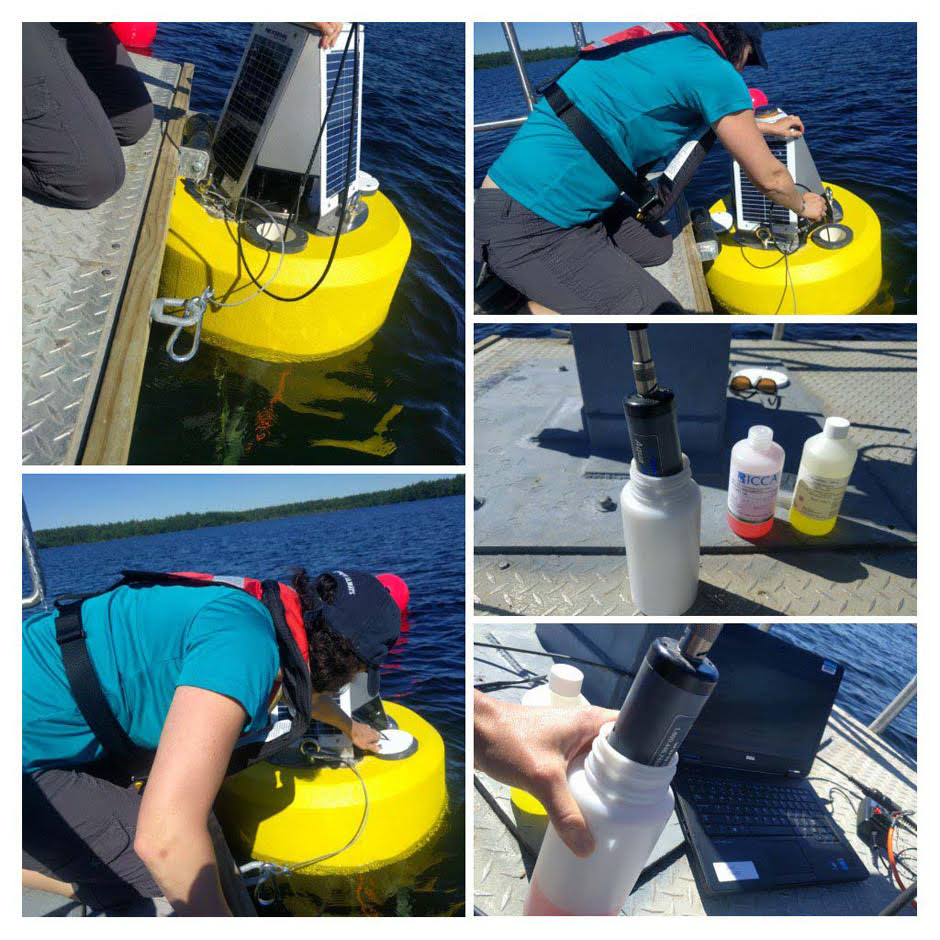 Sebago Lake is the second largest lake in Maine—one of the only lakes in the nation with clean enough water for use by a drinking water facility without filtration requirements. Residents of the Greater Portland area are the beneficiaries, and they are invested in maintaining their lake’s health.
Sebago Lake is the second largest lake in Maine—one of the only lakes in the nation with clean enough water for use by a drinking water facility without filtration requirements. Residents of the Greater Portland area are the beneficiaries, and they are invested in maintaining their lake’s health.
A joint project between the Portland Water District (PWD) and Saint Joseph’s College of Maine (SJC) assisted by the NexSens team submerged around 145 pounds of new, high-tech equipment in Sebago Lake in 2018.
Challenge: Committed to Keeping Crystal Clear
The waters of Sebago Lake have always been very clear, but this monitoring project is a proactive attempt to prevent problems that experts predict changes in climate might cause.
“15% of Maine’s population is fortunate to have Sebago Lake as their drinking water supply,” explains Brie Holme, a water resources specialist with PWD. “However, New England’s lakes are changing in response to climate, use, and development stressors.”
An extended growing season, increased rainfall, and more frequent extreme storms with more runoff washing into Maine’s lakes can feed algae. These and other changes make it important to keep an even closer eye on the water supply.
Previously two similar buoys allowed for monthly monitoring of the lake from May through October for decades. Now, the new buoy will provide data from the Lower Bay’s deepest point every 15 minutes.
Solution: Real-time data, safely
The project team partnered with NexSens to tackle this challenge and its pain points:
- a need for much more frequent data
- a danger in contaminating the water during sampling or maintaining equipment

- a need to share data publicly between stakeholders
- ability to react to water quality issues fast.
The new NexSens CB-450 monitoring buoy’s sensor array monitors and transmits data on the lake’s chlorophyll, clarity, dissolved oxygen, pH, and temperature, updated every 15 minutes.
“The Sebago Lake buoy holds an AquaTroll 400 multi-parameter probe that we use to measure temperature, dissolved oxygen, and PH at a depth of 2 meters; a NexSens TS210 Thermistor String which has 14 temperature sensors throughout the water column; two Turner Designs Cyclops -7F Submersible Sensors for measuring chlorophyll at depths of 6 and 10 meters; an In-Situ RDO PRO-X Optical Dissolved Oxygen Sensor at a depth of 38 meters, just above the bottom of the lake; and two LI-COR LI-192 Underwater PAR Sensors at depths of 1 and 6 meters for measuring water clarity,” comments Holme.
Benefits: Staying clean and clear for less
Customized for the project, the buoy is almost entirely solar-powered, works even in bad weather, and can handle monthly calibrations despite its sensitive location.
“The buoy hasn’t lost power yet!” says Holme. “It’s located in the no bodily contact zone of the lake. We worked together to come up with a way to retrieve the AquaTroll Multiparameter Probe for calibration without putting our hands in the water. This involved attaching a perforated, 4-inch schedule 80 PVC deployment pipe to the buoy. The AquaTroll hangs inside the pipe, and can be retrieved from the top of the buoy.”
The new monitoring approach is part of an investment in healthy water in the lake and the region—a shared commitment.
“PWD is invested in the long-term health of Sebago Lake for clear reasons: it is one of the very few water utilities in the country that is exempt from filtration requirements,” remarks Dr. Emily Lesher, an assistant professor at SJC. “That is only possible because the water is so clean and clear. Changing the treatment scheme would be costly to ratepayers and more energy-intensive.”
Result: Better data, more opportunities
Having data every 15 minutes provides many new opportunities for both the water district and the community.
“We are able to better see time-based trends in the data,” states Dr. Lesher. “We knew that dissolved oxygen tends to decrease in the depths of the lake over the summer as organic matter decomposes, but we are learning more about that process as we observe the rates and nature of the changes.”
Having more frequent data also helps the experts react when weather affects the lake—and the drinking water that comes from it.
“Last October near Halloween we had some severe storms and even some tornadoes here in western Maine,” remarks Holme. “The real-time temperature data that our buoy collected allowed us to see exactly when the lake turned over and it was clear that turnover was initiated by the storm. Lake turnover and its associated increase in raw water turbidity require a change in the chemicals that are added to drinking water.”
Of course, there are also other uses for the data. Meteorologists at NOAA’s weather forecasting office in Gray, ME are using the buoy’s water temperature data in their weather forecasting models. And local educators like Dr. Lesher along with fishermen, homeowners, and other members of the public will also be putting the data to work.
The bottom line
Essential data at the right time can keep a clean lake healthy. NexSens research and monitoring equipment is created for each project’s goals, just as in this case, and our team is ready to help you start the process—and you know the team will continue to be here as you adjust and improve your system.
The NexSens CB-450 Data Buoy is designed for deployment in lakes, rivers, coastal waters, harbors, estuaries and other freshwater or marine environments.
The NexSens TS210 Thermistor String provides high precision temperature measurements for profiling in lakes, streams, and coastal waters.
The LI-COR LI-192 Underwater PAR Sensor Quantum sensor accurately measures photosynthetically active radiation (PAR) in freshwater or saltwater environments.
The YSI EXO represents the next generation of water quality instruments from YSI. The EXO1 sonde includes four sensor ports with internal data logging and battery power.
The Cyclops-7F submersible sensor is a high performance and compact fluorometer designed for integration into any platform that supplies power and data logging.
WQData LIVE is a web-based project management service that allows users 24/7 instant access to data collected from remote telemetry systems.

